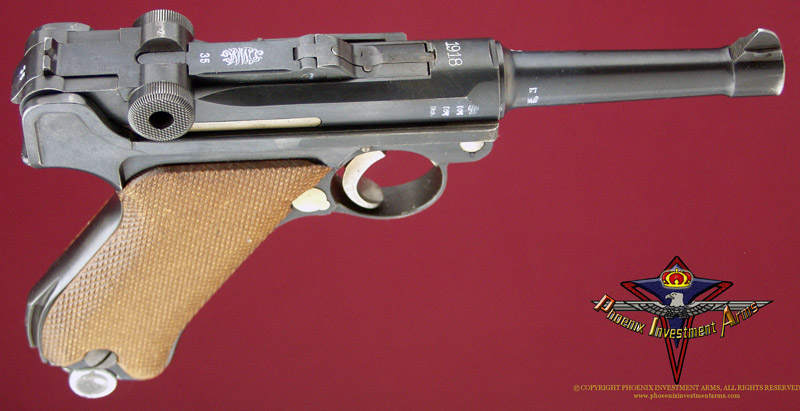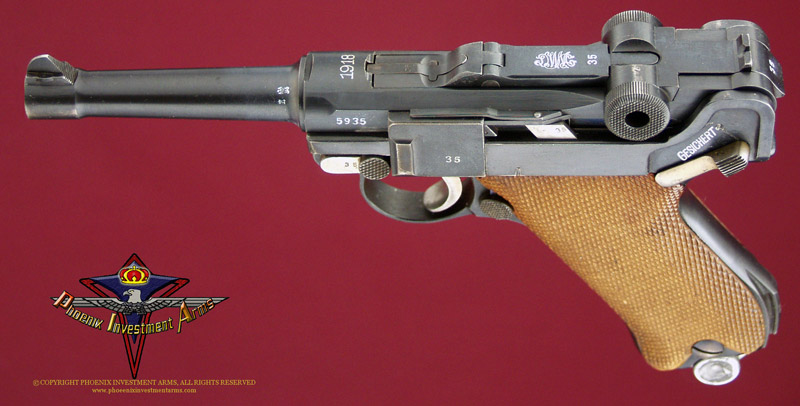 |
|
This is a beautiful example of the Model 1908 DWM (Deutsches Waffen Und Munitionsfabriken Co) Manufactured Pistole-08. The chamber marking represent the military contract year of production and this example is a 1918 dated Luger. The frame tells us that it was an artillery (200mm barrel) and has had the barrel replaced by Simson & Co., the only one authorized to build Lugers after the great war by the treaty of Versailles. The is a 9mm, all matching police luger. The DWM monogram markings appear on the 1st toggle link and the extractor is marked 'Geladen' (Loaded). This example has all matching serial numbers. The thumb safety is marked "Gesichert" and when exposed (safety down) means safe. (923) |
|
Photographs are copyrighted, all rights reserved, any extraction, reproduction or display of gun pictures without the express consent of the Phoenix Investment Arms is strictly prohibited Thank you for your cooperation. |
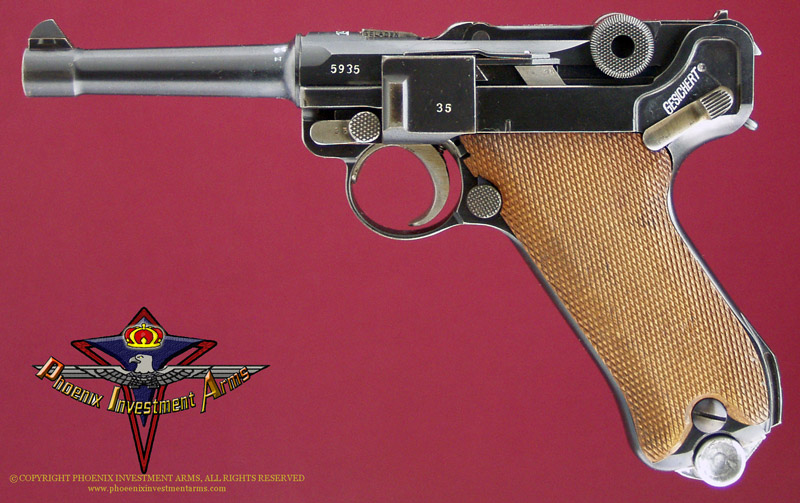

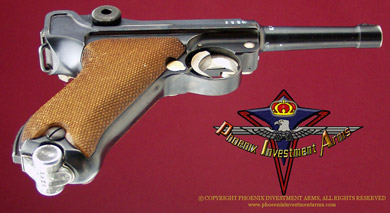
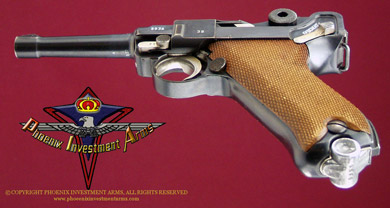
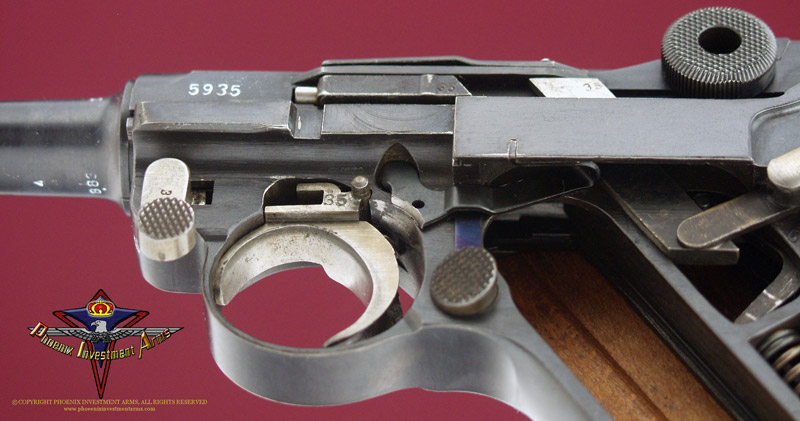
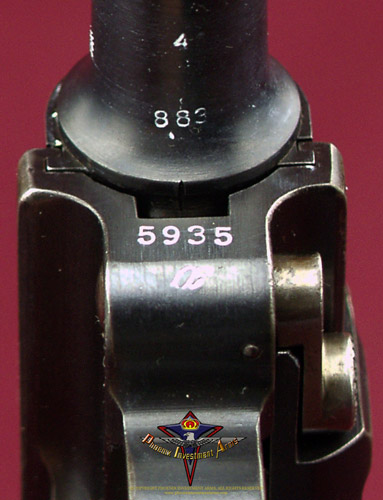
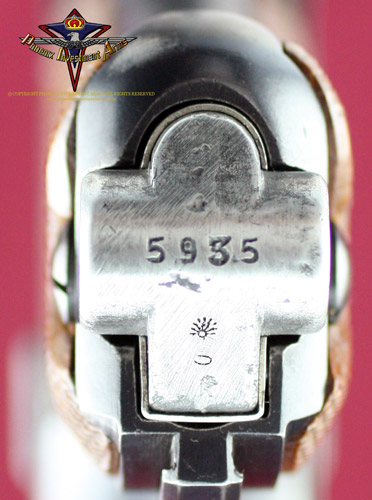

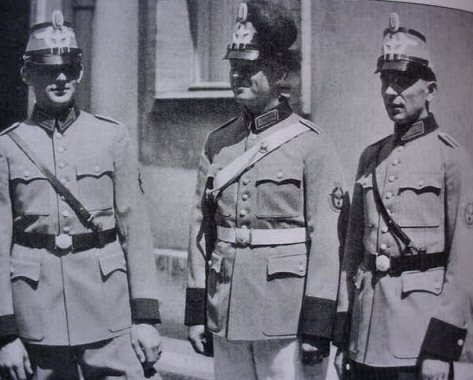 The
German police (Polizei) began as a series of local constabularies and were
assembled into State Police
The
German police (Polizei) began as a series of local constabularies and were
assembled into State Police
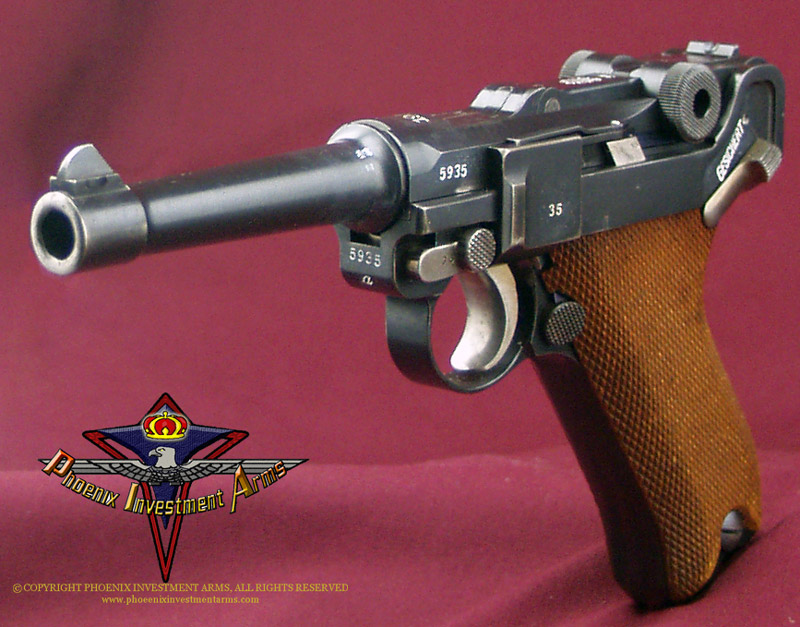
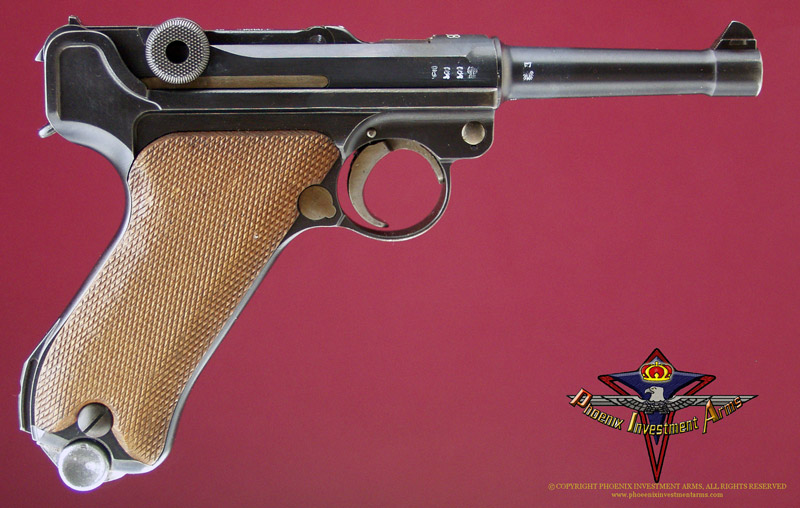
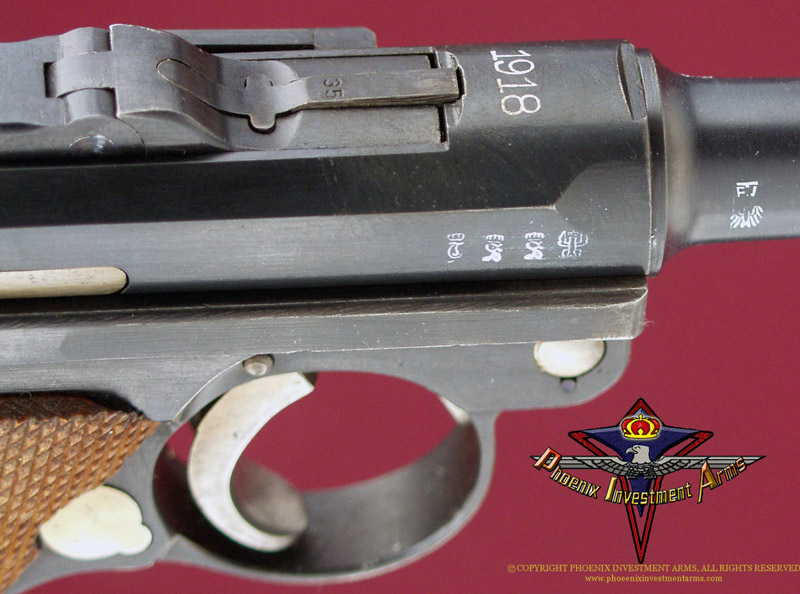
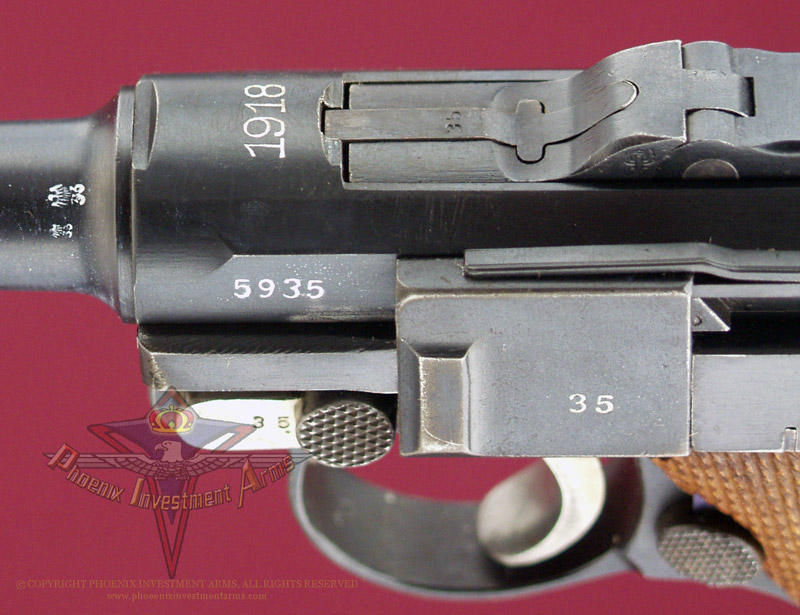
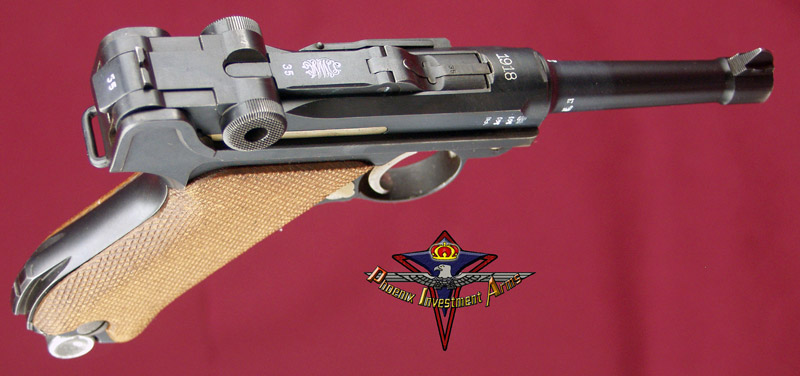
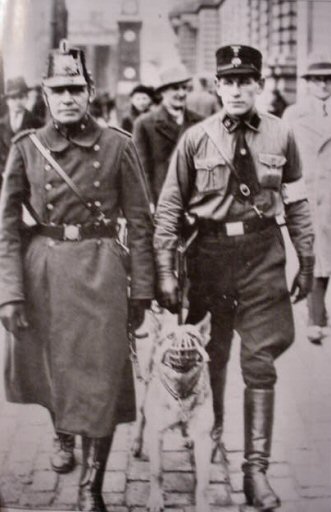 During
the Weimar Republic it was delegated to the seventeen states of Germany to
operate their own police powers of which Prussia was the most powerful.
The weapons of the 1st World War were plentiful and so the armaments of
the Polizei included the Parabellum which had proven itself in the great
war.
During
the Weimar Republic it was delegated to the seventeen states of Germany to
operate their own police powers of which Prussia was the most powerful.
The weapons of the 1st World War were plentiful and so the armaments of
the Polizei included the Parabellum which had proven itself in the great
war. 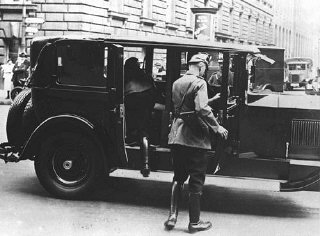 The
Schutzmannschaft was first used to describe the urban constabularies that
were merged in 1920 into the Order Police (Ordnungspolizei) or ORPO.
In addition there was the Protection Police or Schutzpolizei served as
Germany's municipal police force and was tasked with maintaining order in
German cities and larger towns. The Schutzpolizei was further divided into
the following: Schutzpolizei des Reiches (cities and large
towns) which include police-station duties (revierdienst)and barracked
police units for riots and public safety (Kasernierte Polizei) and the
Schutzpolizei der Gemeinden (smaller towns).
The
Schutzmannschaft was first used to describe the urban constabularies that
were merged in 1920 into the Order Police (Ordnungspolizei) or ORPO.
In addition there was the Protection Police or Schutzpolizei served as
Germany's municipal police force and was tasked with maintaining order in
German cities and larger towns. The Schutzpolizei was further divided into
the following: Schutzpolizei des Reiches (cities and large
towns) which include police-station duties (revierdienst)and barracked
police units for riots and public safety (Kasernierte Polizei) and the
Schutzpolizei der Gemeinden (smaller towns).